No it’s not like television. It’s horrible, and nasty, and the rivers do actually flow red with blood.
I am fascinated by stories of the Mongol invasions and the stories of Genghis Khan. These excursions of empire relive the horror and nightmares of a time long ago, and well forgotten. They happened thousands of years ago, and no one can image the carnage and the horrors inflicted upon the citizenry who suffered through those invasions. All we can do is dig up some bones and try to interpret what it must have been like.
And while World War I and II were horrific, they were NOTHING like the in-your-face and up-close personal horror that the Mongol invasions were.
I argue that we need to be constantly reminded that war, real winner-take-all war, is a very ugly and nasty business. And it should be kept fore-front in our minds. Because every four generations or so, humanity forgets and resets itself in some kind of glorious bloodbath. A bloodbath with few survivors.
Someone should remind the American neocons of this fact.
Because I am constantly reminded of the stories (from this time period) where a city would send out 20,000 well equipped knights in shiny pristine armor to confront 500,000 aggressive, fierce, and battle-trained mongols on the field of battle.
It was always a slaughter.
It never went well. For them, and for their defenseless families back behind the massive city walls; walls that soon fell…
The following article is from the Vintage News. It is titled “Mass Family Graves Found in Russia a Grim Reminder of Mongol Invasions”. It was written on Sep 21, 2019 by Ian Harvey. All credit to the author. It was reformatted for this venue, but for the most part very little editing was required.
Mass Family Graves Found in Russia a Grim Reminder of Mongol Invasions
Many people feel we are witnessing grim times these days. But at least there are no Mongol invasions on horseback coming from the mysterious steppes of Central Asia like back in the 13th century.
What with civil wars, hurricanes, and other disasters, man-made or natural, dominating headlines around the world. Sometimes it seems we are living in a particularly violent time as social media carries bad news at an instantaneous speed with humanity’s inhumanity seeming to have no bounds.
But examining any period in history reminds us that, in relative terms at least, we are living in a more or less peaceful time.
Overall, with the exception of localized wars in various countries, we are enjoying global peace. At least we are not mired in world wars, as our forefathers were in the early and mid-20th century.
A Russian archaeological excavation is finding out just how violent and inhumane invasions could be.
Like, for example, the graves of three generations of one family recently uncovered in Yaroslavl, Russia.
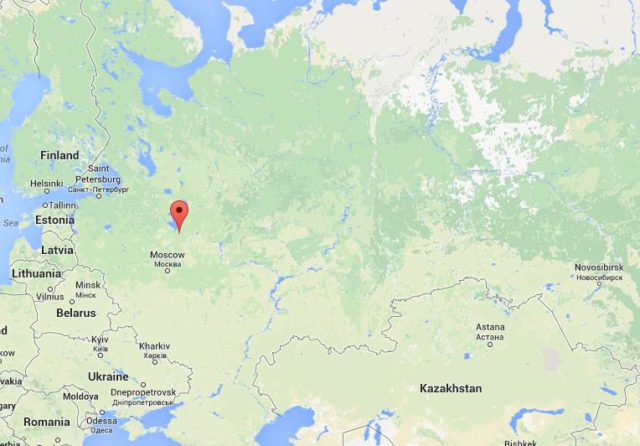
Several burial pits have been found, and one of them contained a tangle of 15 bodies.
Researchers, upon examining these remains, realized they were looking at the skeletons of three generations of one family – a grandmother, a mother, and her son.
(Investigations identified their demise.) They were slaughtered by Mongol invaders in the area in the 13th century.
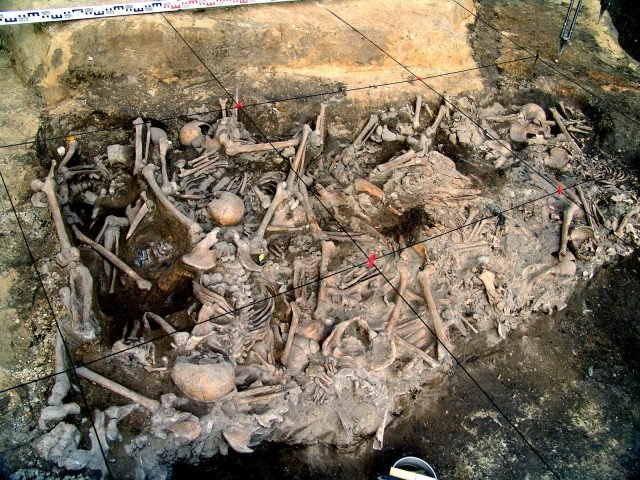
The Mongols invaded Russia in 1238, under the leadership of Batu Khan, grandson of the notorious leader Genghis Khan.
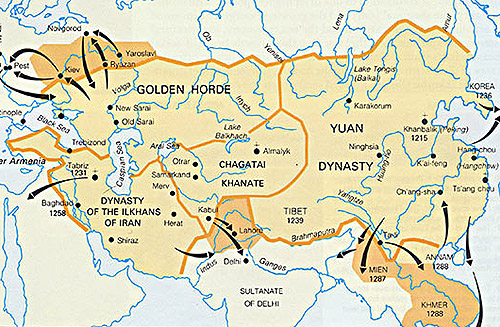
Asya Engovatova, a researcher with the Institute of Archaeology in Russia notes that the remains have indications of gruesome torture, including piercings and severe cuts and blows, giving the picture not only of the fall of a whole city, but the sad ending of one family.
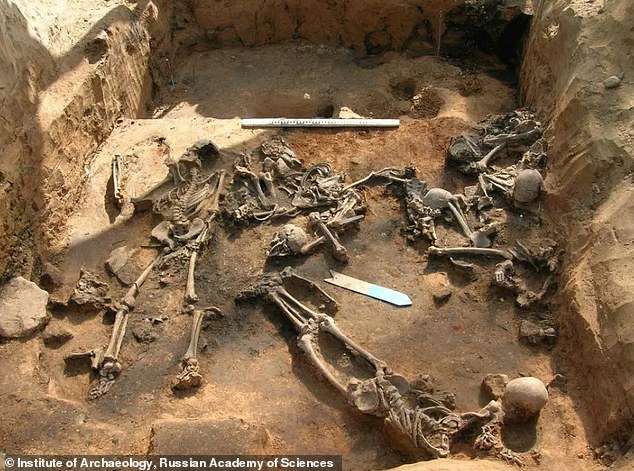
Historians have known for some time that Yaroslavl fell to the Mongol invasions in the 13th century.
However, the level of violence inflicted upon civilians has not been as well known, or understood, until the last decade or so.
The city’s Assumption Cathedral was razed in 1937, but mass graves were not found beneath it until 2005; the graves contained the remains of more than 300 people.
This latest discovery is just more evidence of the brutality the town suffered.
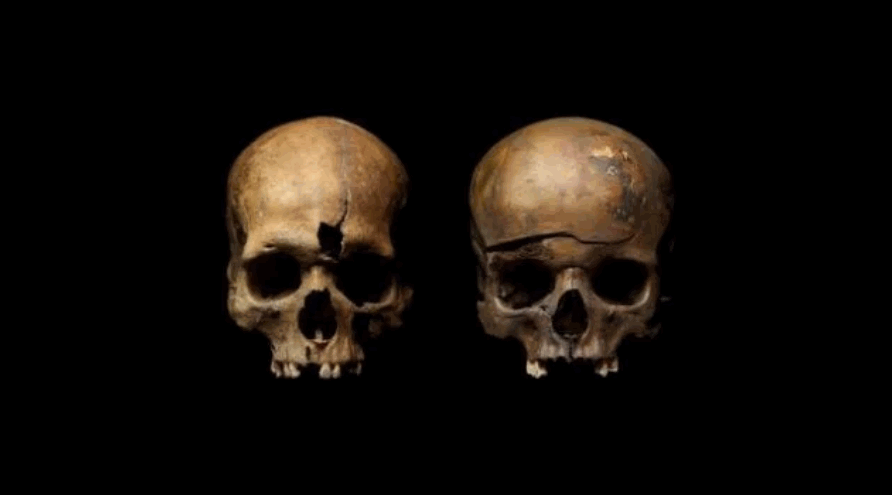
Engovatova stated,
“What we now know about those raids suggests that chronicle descriptions of ‘a city drowned in blood’ were not merely a figure of speech.”
Science is uncovering the grim reality about how this city fell to its invaders, and it is an ugly reminder of just how lawless and cruel those invaders were.
She continued,
“Batu Khan’s conquest of Russia was the greatest national tragedy, surpassing any other event in cruelty and destruction. It is not by chance that it is among the few events that made its way into the Russian folklore.”
Every child understands stories of the “boogeyman” and tales about dark forces that hide under the bed or in a closet.
Russia, perhaps more so than other nations in this respect, has good reason for dark tales about bad spirits; after all, historians estimate that over the course of its two-centuries long rule, the Mongol Empire invasions killed as many as one million civilians across Europe.
And while historical texts indicate that most people submitted to their rule without argument, this new evidence suggests that many atrocities were committed during their conquests.
This family, for example, recently uncovered: researchers say the bodies were first merely chucked into the snow. (After a spell during the Spring thaw…) They were buried for health reasons, finally, and likely because of the stench.
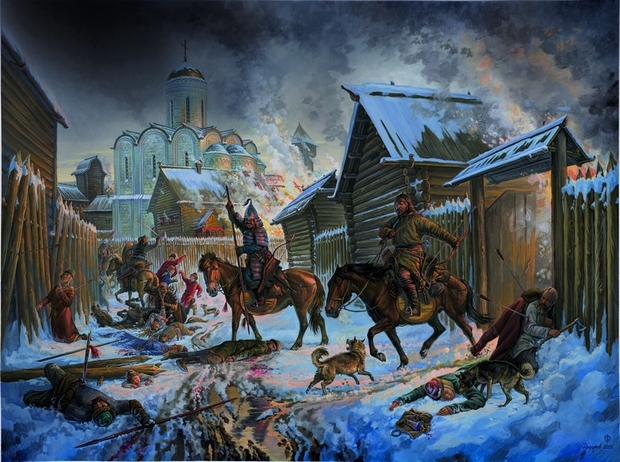
And so, while it is easy to get carried away about the troubles facing our modern world, we must remember that, by and large, these days civility reigns supreme, at least in most countries.
What happened in Russia during that 13th century invasion puts the world’s current troubles into some kind of perspective.
Commentary
This is horrific, but there’s more. There are other digs and other discoveries of others who have also died during this sequence of events. It’s not just one of two families. It’s an entire regions of cities, towns, and culture. No one was spared. No one survived.
The following article is titled “Researchers Uncover Horrors Of Russian ‘City Drowned In Blood’ By The Mongols In 1238“. It was written by Marco Margaritoff and published on September 13, 2019. It is reprinted in full and all credit to the author.
Researchers Uncover Horrors Of Russian ‘City Drowned In Blood’ By The Mongols In 1238″
More than 300 bodies were buried across nine death pits of 15 people each. One contained three generations of one family.
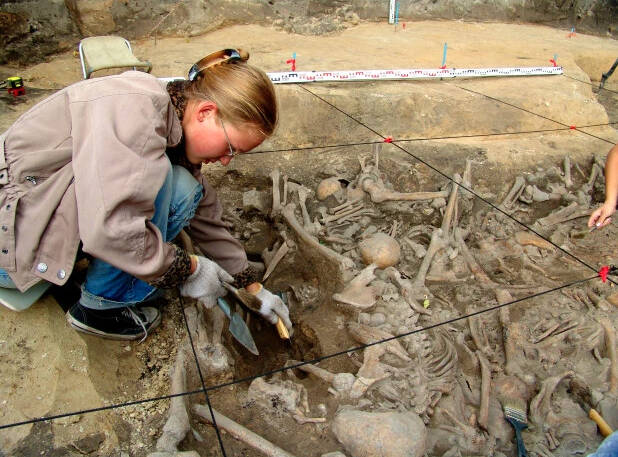
When the Mongols invaded the Russian town of Yaroslavl in 1238, almost nobody was spared. Hundreds were slaughtered brutally and dumped into mass graves as the town was completely sacked. Nearly 800 years later, researchers have given us a chilling glimpse of the victims left behind.
After the slaughter, Mongol raiders buried the dead in pits by the dozens with no markers to distinguish who these poor victims even were, wrote LiveScience.
But one pit of the dead in particular stood out after scientists of the Moscow Institute of Physics and Technology began genetically analyzing three of its 15 corpses.
Researchers found that the three murdered townsfolk buried together in the dirt were a woman, her daughter, and her grandson. Moscow’s research team found that the eldest of the three corpses was at least 55 years old before she died.
Her daughter was between 30 and 40, while her grandson was younger than 20.
The young girls and women were missing. As were all the men. One could imagine that the men were killed trying to repel the invaders. As for the women, we can only speculate. If there is a son younger than 20, were are his 20-something sisters?
They were buried in one of nine pits found at Yaroslavl, which altogether held more than 300 bodies.
The biological relation between three of the bodies found at Yaroslavl first became apparent after researchers noticed similar features on the skulls. All three family members also showed signs of spina bifida, which is hereditary.
As for Yaroslavl as a whole, Mongols led by Genghis Khan’s grandson Batu Khan destroyed the town not long after advancing into Russia. Nonetheless, enough buildings and artifacts survived to tell us a little something about the area, namely that it was a wealthy one.

Scientists determined this by noting the tooth decay present in the three bodies in question and noting that the honey and sugar that could cause this were only available to those with substantial means at the time.
Beyond the three generations of one family left slaughtered in a pit, the scene at Yaroslavl showed just how brutal its conquest was. Batu Khan invaded towns like Yaroslavl with utter indifference, ultimately taking more than a dozen places in present-day Russia.
In just five years, he wiped out seven percent of Russia’s population. When the Russian Grand Prince refused to submit to the Mongols, Genghis Khan’s grandson simply burned the capital city to the ground — with the royal family and every inhabitant inside.
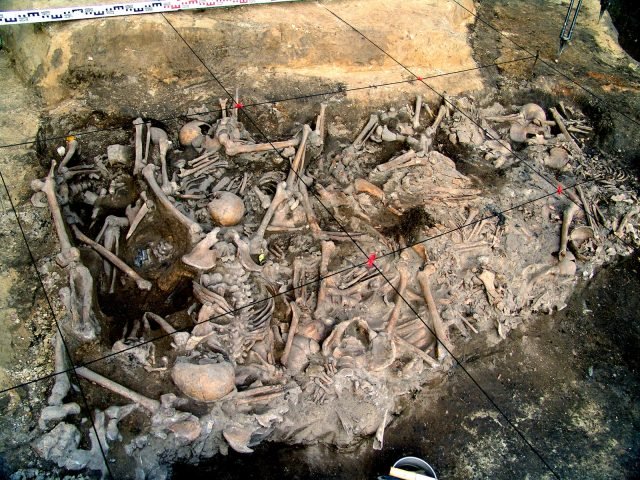
For Asya Engovatova, deputy director of the Institute of Archaeology at the Russian Academy of Sciences and head of the Yaroslavl excavation, the evidence uncovered there clarifies why the story of its conquest became common knowledge among Russians.
“Batu Khan’s conquest was the greatest national tragedy, surpassing any other event in cruelty and destruction,” she said. “It is not by chance that it is among the few such events that made its way into the Russian folklore.”
The brutality that has made the conquest of Yaroslavl unforgettable for many Russians was certainly on display in the way the victims’ bodies were treated after death.
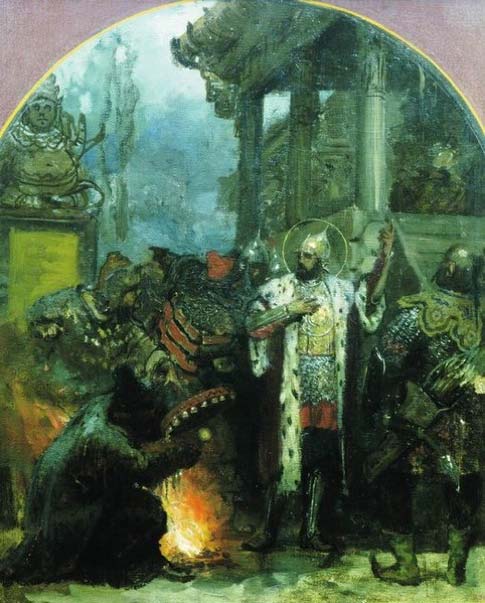
Prior analysis suggested that the three family members, for example, were buried in February 1238. But recent evidence in the form of preserved maggots in their remains indicated otherwise. In fact, new evidence shows that the bodies were probably decomposing in the open air for months before they were buried.
“These people were killed, and their bodies remained lying in the snow for a fairly long time. In April or May, flies started to multiply on the remains, and in late May or early June, they were buried in a pit on the homestead, which is where they probably had lived.”
Fittingly, Engovatova described Yaroslavl after the attack as a “city drowned in blood.” The skeletons of the three family members as well as the remains of the other victims — including punctured, broken, and burned bones in the hundreds of buried bodies — certainly suggest that to be true.
Conclusion
We, as Americans, picture war from the lens of the television screen. We picture sleek state-of-the-art jet aircraft (or drones) firing high-technology missiles into mud huts, and an occasional Toyota pickup truck. We imagine well equipped soldiers with kelvar armored vests over their desert camo clothing. We see them firing assault guns and wearing high-technology wrap around black sunglasses.
We watch the news reports on Facebook and Google up some pictures on the Internet. Then we go through the drive through and get a number #3 with a large Coke at Burger King.
That’s not war.
That’s a police action by proxy being observed by disinterested spectators.
The most anyone is going to do is type up a snide comment in the comment section.
That is not war.
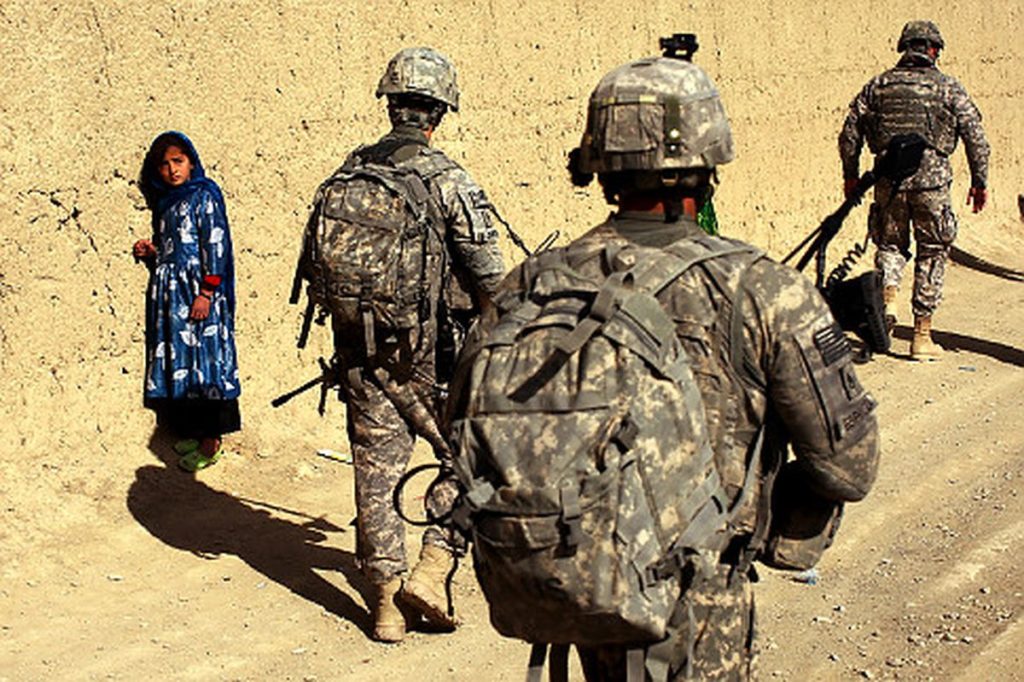
War, real war, is a deeply personal matter.
You and your family can lose everything, and very few people escape it without having family members killed, homes and livelihoods destroyed and your culture and society thrown into the dustbin.
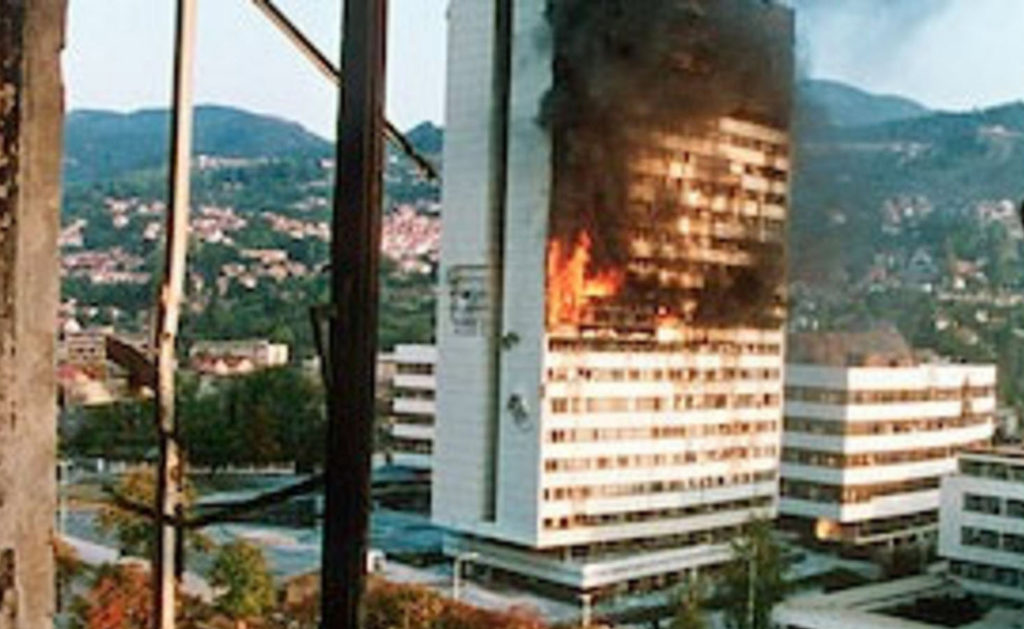
The neocons of America are living a Hollywood constructed fairy tale. I warn everyone that you should not play around thinking that everyone else shares your views. They do not, and they are only getting pissed. Take heed.
America is not viewed as a white knight in shining armor. It is viewed as a corrupt bully that is completely out of control and needs a good slap-down.
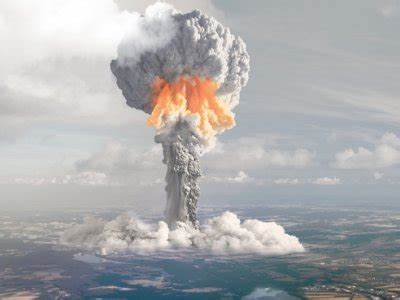
I hope that you found this post to be of interest. I have other posts in my SHTF Index here…
SHTF ArticlesArticles & Links
You’ll not find any big banners or popups here talking about cookies and privacy notices. There are no ads on this site (aside from the hosting ads – a necessary evil). Functionally and fundamentally, I just don’t make money off of this blog. It is NOT monetized. Finally, I don’t track you because I just don’t care to.
To go to the MAIN Index;
Master Index.
- You can start reading the articles by going HERE.
- You can visit the Index Page HERE to explore by article subject.
- You can also ask the author some questions. You can go HERE .
- You can find out more about the author HERE.
- If you have concerns or complaints, you can go HERE.
- If you want to make a donation, you can go HERE.
Please kindly help me out in this effort. There is a lot of effort that goes into this disclosure. I could use all the financial support that anyone could provide. Thank you very much.
[wp_paypal_payment]

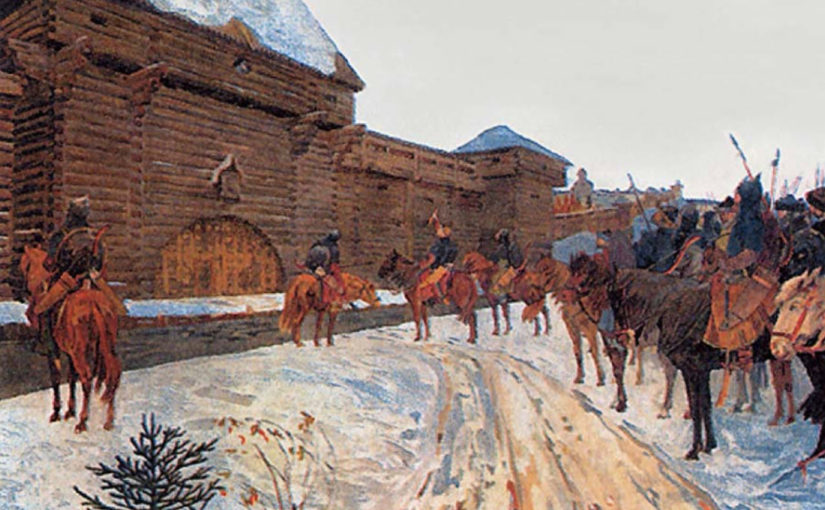

brilliant article in all respects. what i don’t understand is the variance between this article and the articles where you talk like trailer trash with misspellings, bad pronunciation, etc. i believe you are several writers.
I usually type single handed with a infant on my shoulder and a glass of red wine in my hand. This time the baby was sleeping and I was only drinking beer. I guess that I am better than I used to be. I am sure Tim McGraw would agree.